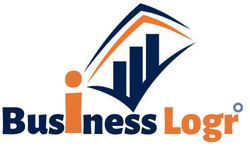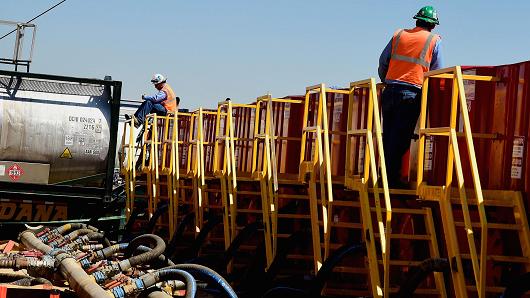
Introduction
Purchasing commercial real estate or starting a new business often requires securing a commercial loan. While obtaining financing can be a vital step in achieving your goals, it’s essential to understand the various aspects involved. One crucial consideration is the commercial loan down payment. In this article, we will explore what a commercial loan down payment entails, its significance, and the factors that influence it. Let’s dive in and gain a deeper understanding of this critical aspect of commercial lending.
1. Understanding Commercial Loans
1.1 Definition and Purpose
Commercial loans are financial products specifically designed to support businesses in acquiring properties, expanding operations, or meeting other financial requirements. These loans provide access to substantial amounts of capital that can be repaid over an extended period, allowing businesses to grow and thrive.
1.2 Types of Commercial Loans
There are various types of commercial loans available, each serving specific purposes. Some common types include:
- Commercial mortgages: Used to purchase commercial real estate.
- Construction loans: Provide financing for constructing new properties or renovating existing ones.
- Equipment loans: Assist in acquiring machinery or equipment for business operations.
- Working capital loans: Address short-term cash flow needs and support daily operations.
2. The Role of Down Payment in Commercial Loans
2.1 Definition and Importance
A commercial loan down payment refers to the initial payment made by the borrower when securing a loan. It is a percentage of the total loan amount and plays a significant role in the loan approval process. Lenders require a down payment as it reduces their risk and demonstrates the borrower’s commitment to the investment.
2.2 Benefits of a Higher Down Payment
Opting for a higher down payment when obtaining a commercial loan can provide several advantages, such as:
- Increased chances of loan approval: Lenders perceive a higher down payment as a lower risk and are more likely to approve the loan application.
- Lower interest rates: A substantial down payment can potentially lead to lower interest rates, reducing the overall cost of borrowing.
- Improved cash flow: A higher down payment results in a lower loan amount, leading to lower monthly installments and improved cash flow for the borrower.
3. Factors Influencing Commercial Loan Down Payments
3.1 Loan Type and Terms
Different loan types have varying down payment requirements. For example, commercial mortgages typically require a down payment of 20% to 30% of the property’s purchase price. Construction loans might have higher down payment requirements due to the higher associated risks.
3.2 Borrower’s Financial Profile
Lenders consider the financial stability and creditworthiness of the borrower. Factors such as credit score, income, assets, and existing debts play a significant role in determining the down payment amount.
3.3 Property Type and Value
The type and value of the property being financed also impact the down payment. Lenders may require a higher down payment for properties with higher risks or lower market values.
4. Strategies to Accumulate a Commercial Loan Down Payment
4.1 Creating a Savings Plan
Planning and saving for a commercial loan down payment is crucial. By establishing a budget, cutting unnecessary expenses, and setting aside a portion of the business’s profits, you can steadily accumulate the required funds.
4.2 Exploring Down Payment Assistance Programs
In some cases, down payment assistance programs or grants may be available to support businesses in specific industries or locations. Researching and applying for such programs can provide additional financial resources.
4.3 Alternative Funding Options
Exploring alternative funding options, such as partnerships, crowdfunding, or seeking investors, can help raise the necessary funds for the down payment. Collaborating with others can reduce the individual burden of accumulating a substantial amount.
5. Tips for Negotiating a Commercial Loan Down Payment
5.1 Demonstrating Financial Stability
Providing thorough financial documentation, including business financial statements, tax returns, and proof of consistent revenue, can enhance your credibility and strengthen your negotiation position.
5.2 Presenting a Strong Business Plan
A well-prepared business plan that outlines your goals, strategies, and projected financial performance can instill confidence in lenders. It demonstrates your ability to generate sufficient income to repay the loan.
5.3 Working with a Knowledgeable Lender
Collaborating with a lender experienced in commercial lending can provide valuable insights and guidance throughout the loan process. Their expertise can help you negotiate favorable down payment terms.
6. Conclusion
Securing a commercial loan requires careful consideration of the down payment. By understanding its significance and the factors influencing it, you can plan effectively and increase your chances of loan approval. Accumulating the necessary funds, exploring assistance programs, and adopting sound negotiation strategies will help you navigate the commercial loan process more confidently. With the right preparation, you can take the first step towards realizing your business goals.
Frequently Asked Questions (FAQs)
1. Can I secure a commercial loan without a down payment?
While it is challenging to secure a commercial loan without a down payment, some lenders may offer alternative options such as SBA loans or other government-backed programs that require a lower down payment.
2. What is the typical range for commercial loan down payments?
The typical range for commercial loan down payments is between 10% and 30% of the property’s purchase price. However, this can vary depending on factors such as the loan type, lender requirements, and borrower qualifications.
3. Are there any tax benefits associated with a commercial loan down payment?
Consulting with a tax advisor or accountant is recommended to understand the specific tax benefits associated with commercial loan down payments. In some cases, deductions or credits may be available based on interest payments or depreciation.
4. Can I use funds from a personal loan for the down payment?
It is generally not advisable to use funds from a personal loan for a commercial loan down payment. Mixing personal and business finances can complicate accounting, and lenders may have specific requirements regarding the source of funds.
5. Is it possible to negotiate the down payment terms with the lender?
Negotiating down payment terms with the lender is possible, especially if you have a strong financial profile and can demonstrate your ability to repay the loan. Working with an experienced lender can increase your chances of achieving more favorable down payment terms.




